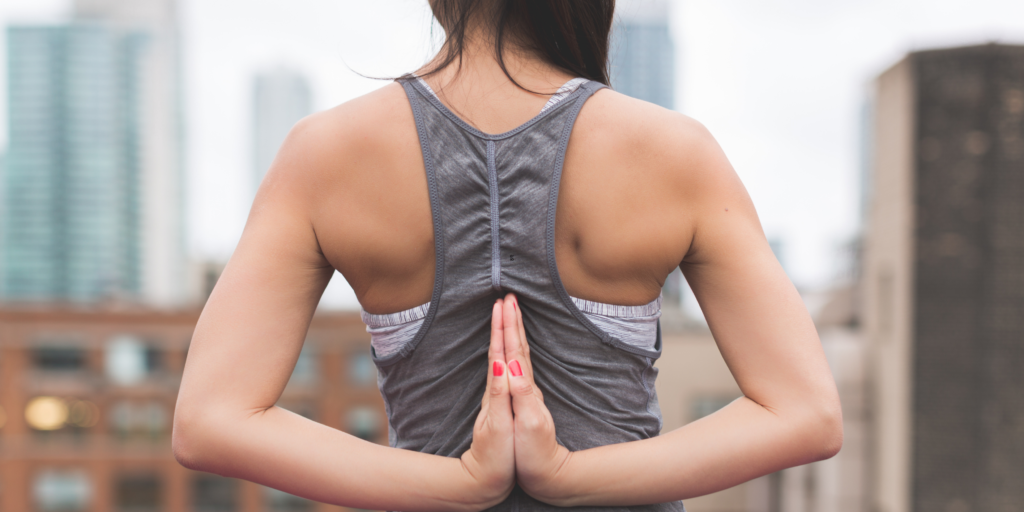Some special tests can be modified to be done via telehealth. Below we have provided photos and instructions as guidance on how to perform these special tests.
Slump Test
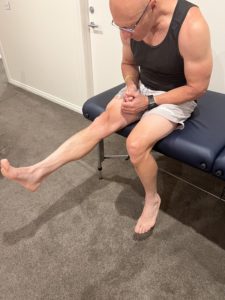
The slump test can be performed with the patient slumping forward in a seated position, flexing the thoracic spine and rounding the shoulders while keeping the head erect. If no reproduction of radicular leg pain is noticed, then the patient should maximally flex the neck. If still no reproduction of radicular leg pain, the patient can then extend the symptomatic leg. If pain still cannot be reproduced, the test is considered negative.
Straight Leg Raise
Supine :
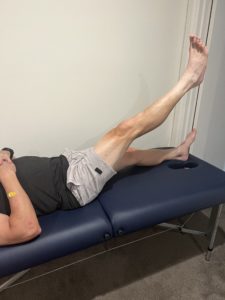
This test is performed with the patient lying on a bed/floor/mat. The patient’s leg is raised in a progressive fashion monitoring for reproduction of leg pain. The leg should remain relaxed/straight. Any hip group muscle activation could promote hip region musculoskeletal pain and confuse the interpretation of the test. A positive test reproduces radicular pain in a nerve root distribution below the knee at 30 to 70 degrees of passive hip flexion. The therapist can also instruct the patient to apply various sensitisation tests, such as adding passive ankle dorsiflexion (if an assistant is present with the patient) or performing the SLR test in an adducted and internally rotated position which can bring out more subtle symptoms.
This test can also be performed on the asymptomatic side. If this reproduces the radicular pain, it can be considered positive and potentially reflects a disc herniation.
Seated:
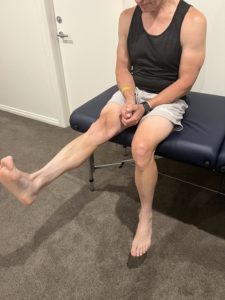
The straight leg raise (SLR) test is performed in patients with suspected L4 to L5 or L5 to S1 disc herniation. A positive test reproduces the patient’s usual leg pain below the knee.
Stork Test
Standing:
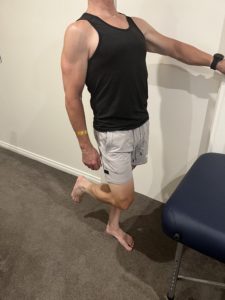
In the typical variant of the test, the patient stands on 1 leg while holding on to a stable object. The patient then attempts to extend the spine. A positive test reproduces the patient’s usual back pain on the symptomatic side. This finding may be especially helpful in young athletic patients in whom spondylolysis is suspected.
Prone:
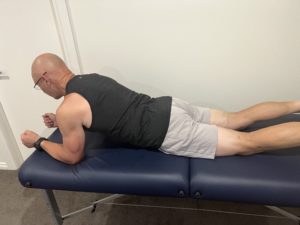
If the patient is unable to perform the test in this manner, they can instead attempt a prone variation as shown above. The patient can increase their degree of extension by pushing up on their hands.
Modified from:
Laskowski, E., Johnson, S., Shelerud, R., Lee, J., Rabatin, A., Driscoll, S., Moore, B., Wainberg, M., Terzic, C. (2020). The Telemedicine Musculoskeletal Examination. Mayo Clinic Proceedings, 95(8), 1715-1731.
Next – Shoulder
